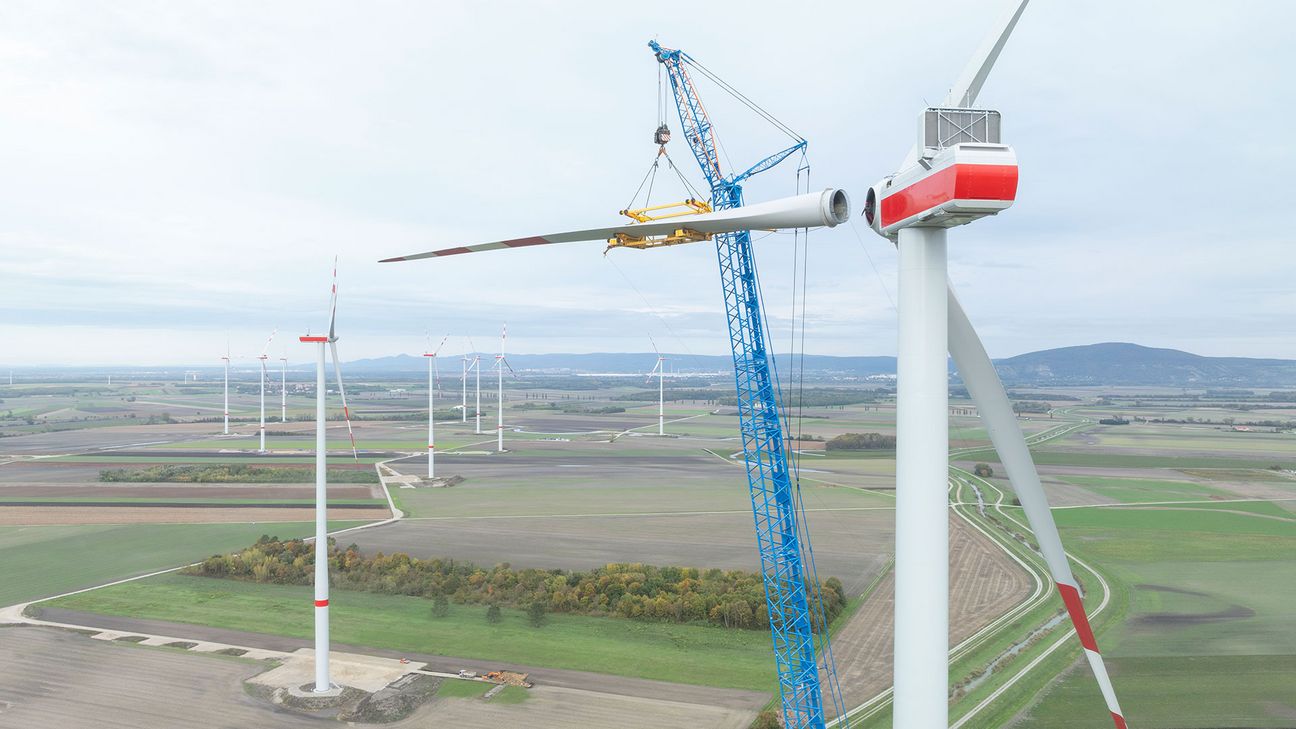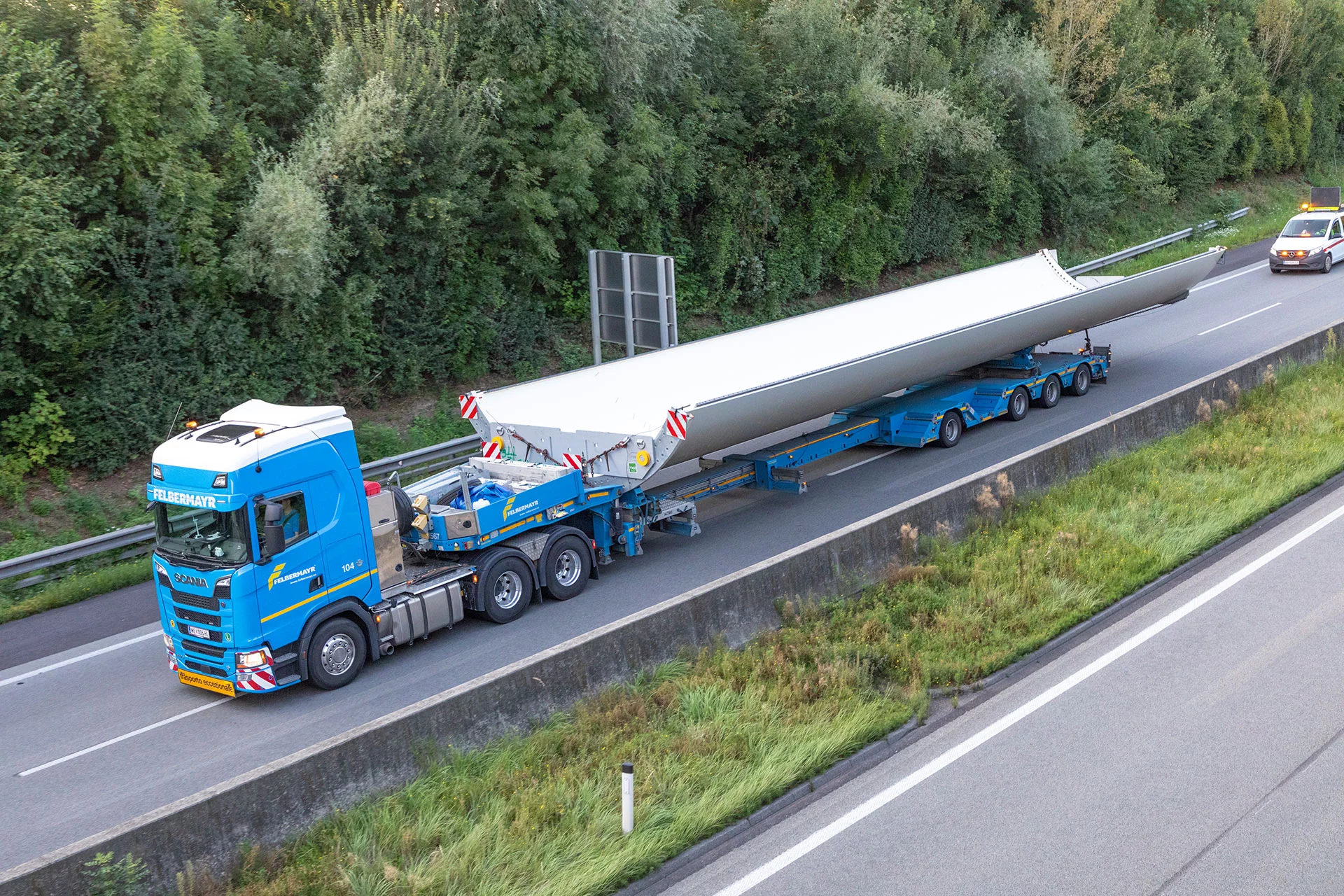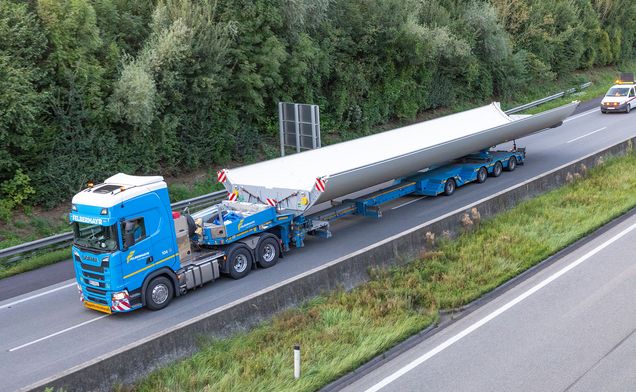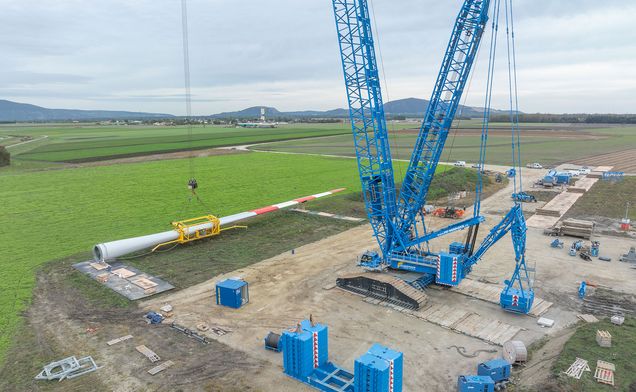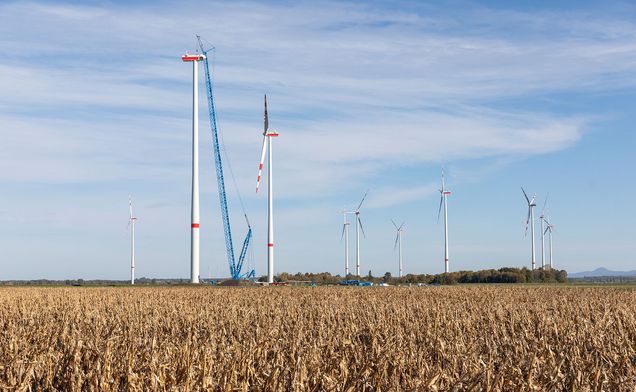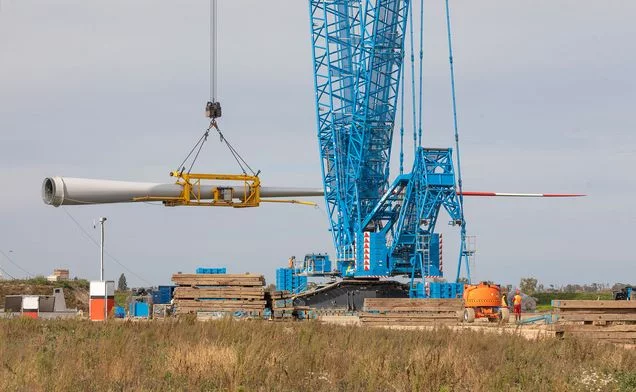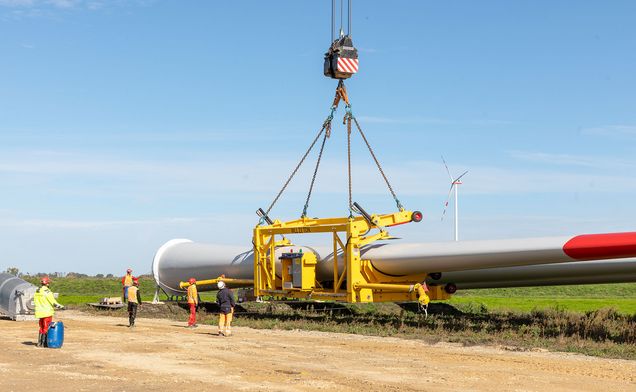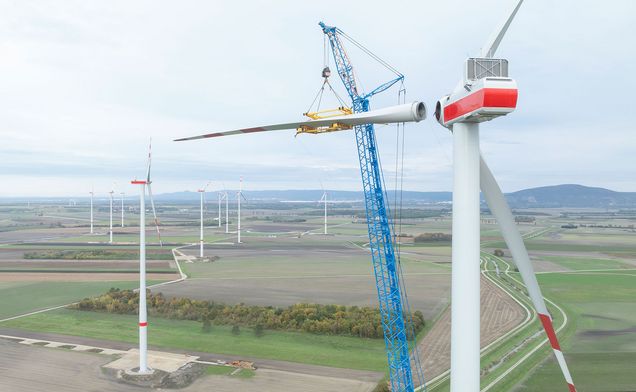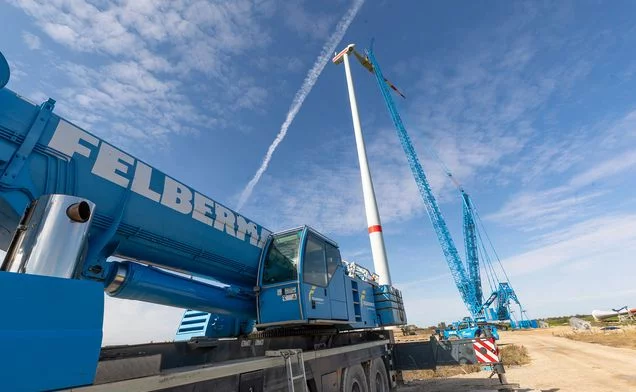Concentrated power for wind power
April 30, 2025 | Lucia Reinsprecht
"This project was all about just-in-time deliveries. Every transport operation had to be meticulously planned and completed on time," explains Patrick Pühringer, Project Manager for Wind Power Transport at Felbermayr. Scheduling almost 200 transport loads so that they arrive at the right time and crane downtimes are thereby prevented was a unique challenge and a full-time job with plenty of sleepless nights - even for the experienced heavy haulage specialist. The Felbermayr team coordinated 18 heavy transports of up to 74 metres in length every week for 14 weeks. 'We were in close contact with the project department, which was responsible for the on-site lifts, making sure that no information was lost,' says Pühringer. A major project requiring constant coordination and, most importantly, a wealth of experience.
283 wind turbines in three years
The transport and erection of wind turbines is considered to be a special ‘“feat of engineering”’ that poses numerous challenges. In the last three years alone, the Felbermayr team has transported and erected around 283 wind turbines throughout Austria and Germany. This involves an immense amount of work, not just in the actual transport, but also in the preparation. "Our planning had already kicked off six months earlier", says Pühringer.
Alongside customs clearance at the ports, the Felbermayr team was also responsible for acquiring a number of route authorisations. "For this project alone, we requested over 250 route permits at the beginning of the year," says Pühringer. On top of this comes the coordination of the accompanying vehicles, the BF4 vehicles and the police. "We required six facilitators, so-called “administrative assistants”, for one set of one-third shells in Germany.
There were nine road supervisory bodies in Austria," explains Pühringer. Since in many locations the route sections are not designed for transport in such lengths and widths, numerous so-called "traffic-directing measures" must also be implemented. This is why the Felbermayr team has its own workshop bus in use. "This enables us to put up signs, lay out boards, cut trees and carry out other traffic control measures," explains Pühringer.
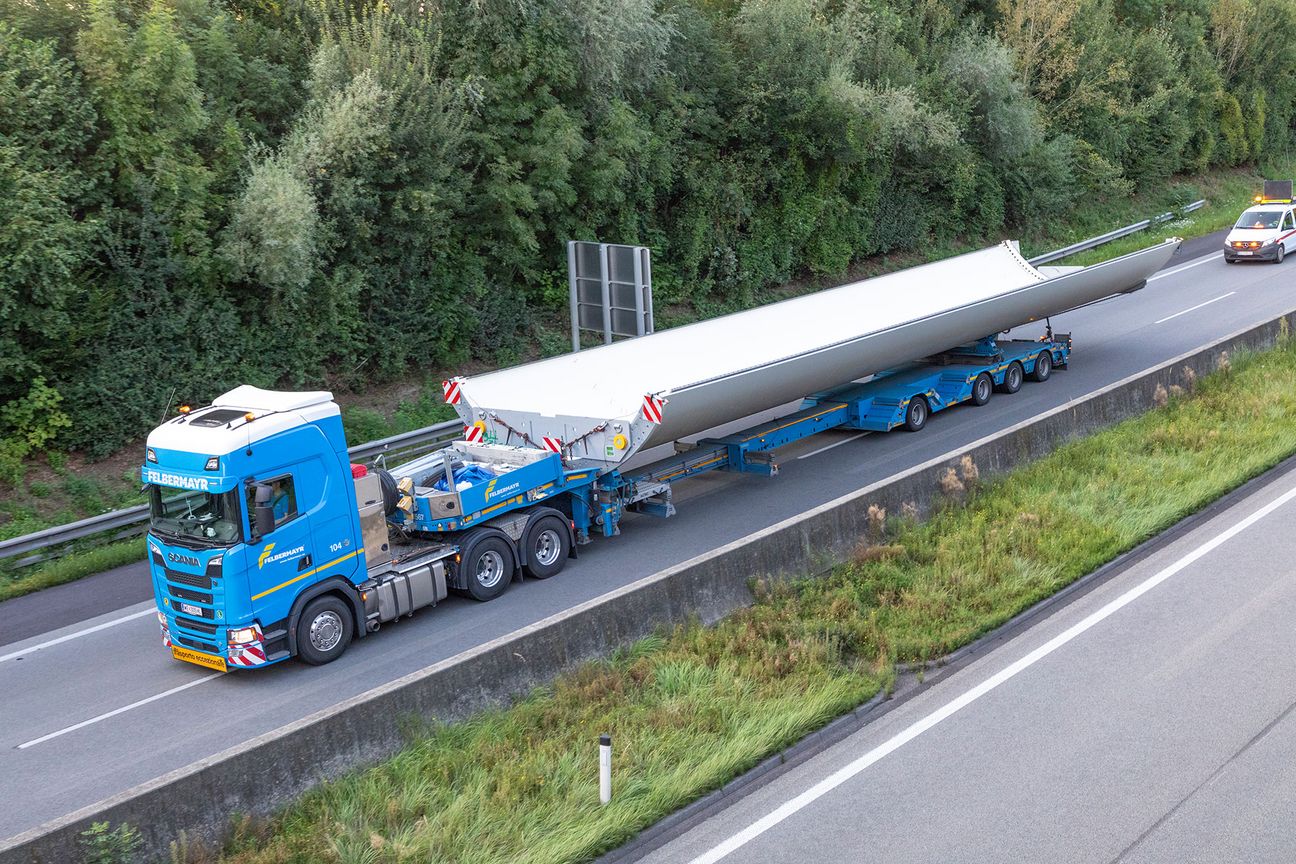
Extensive transport equipment
In addition to meticulous preparation, the transport of wind turbines also calls for special transport technology, which needs to be available in such a quantity. "We already scheduled the vehicles in March," Pühringer reveals and adds: "In addition to the fleet from Wels, the branches in Lanzendorf and Graz also supported us on this project." Everyone at Felbermayr sticks together, Pühringer praises the commitment.
Four different types of vehicle were used for the transport operations: Super-Wing-Carrier - vehicles manufactured especially for the transport of rotor blades - telescoping plate saddles for the extra-wide and especially long one-third shells, semi low-loaders with a loading height of 90 centimetres for the extremely heavy components such as nacelle, gears and rotor head, as well as the lift adapters recently restored in the workshop for the tower sections up to 30 metres long. Once loaded in Cuxhaven, the transport convoys continued their journey over around three to four nights via Hanover, Magdeburg, Nuremberg and Munich, passing the Suben border crossing to Vienna via the autobahn and finally to Engelhartstetten.
Two crawler cranes and two mobile cranes in use
When it came to the location of the new wind turbines, the Felbermayr team also faced a particular logistical challenge. "In total, we had two 800-tonne large cranes and two auxiliary cranes with a lifting load of 250 and 160 tonnes in use at the same time," summarises Tina Wagner, Project Manager at Felbermayr Transport- und Hebetechnik.
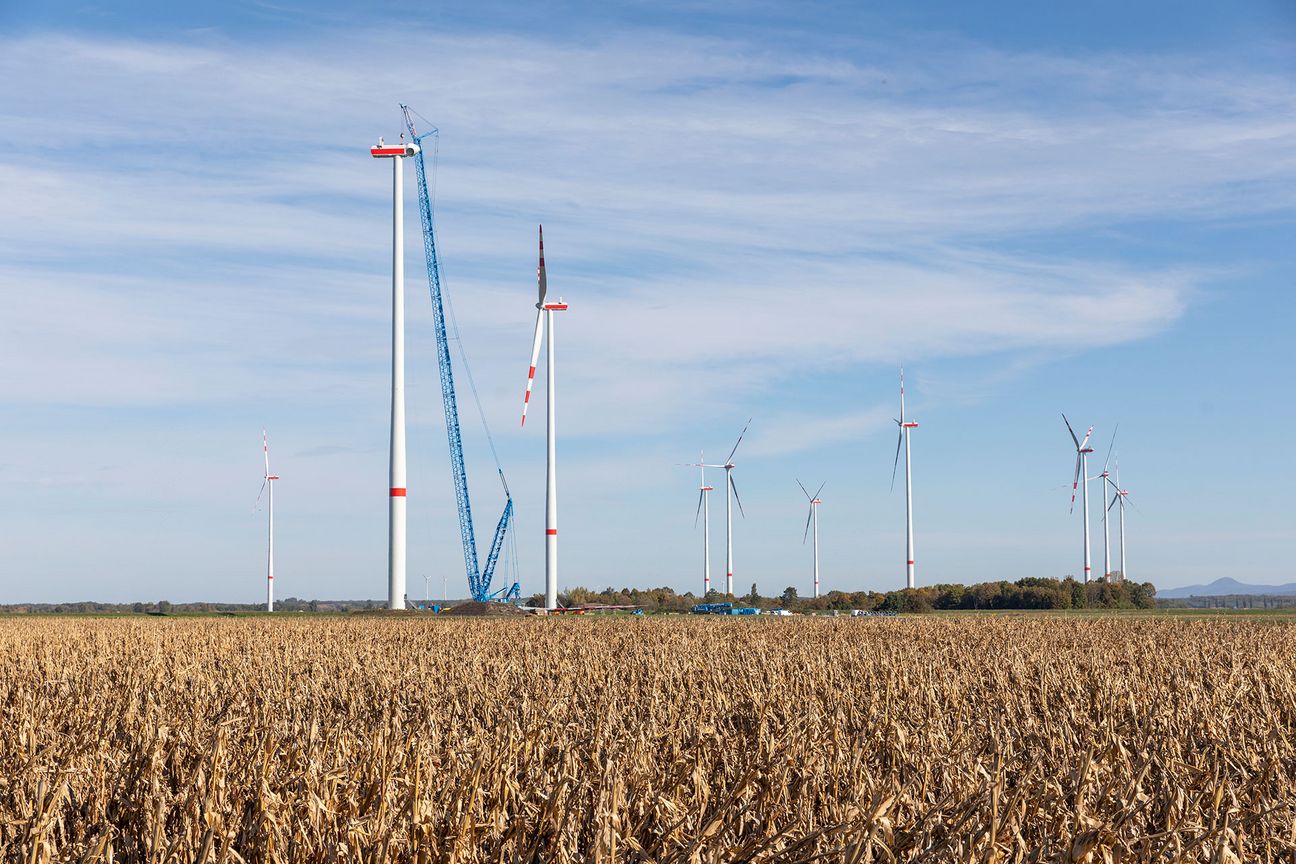
The auxiliary cranes were initially responsible for setting down the arriving components on the intended stands. "The towers of the turbines are so-called Large Diameter Steel Towers (LDST). These are delivered in one-third shells and put together on site with our auxiliary cranes and an assembly team," explains Wagner. Once the first tower sections had been put together, the two 800-tonne crawler cranes simultaneously took over the assembly of the systems.
"We managed to assemble the first three tower segments up to a height of 135 metres without a fixed tip by using the F head piece. We had to extend the booms with a fixed tip to a hook height of 183 metres for the main part, including the 70-tonne nacelle, the 65-tonne gears, the 35-tonne hub and the three 16-tonne rotor blades," reports Wagner. The extension of the main boom alone took a whole working day. "The space constraints on site also necessitated repeated coordination of the retrofitting and repositioning of the two large cranes, since the HGVs could only drive to deliver the crane parts when the other boom was not being retrofitted," Wagner continues. The Felbermayr project team was also faced with the challenge of a public road between two of the installations. Permits had to be secured for the running gear and superstructure and accompanying vehicles had to be organised to allow the giant crane to traverse the road.
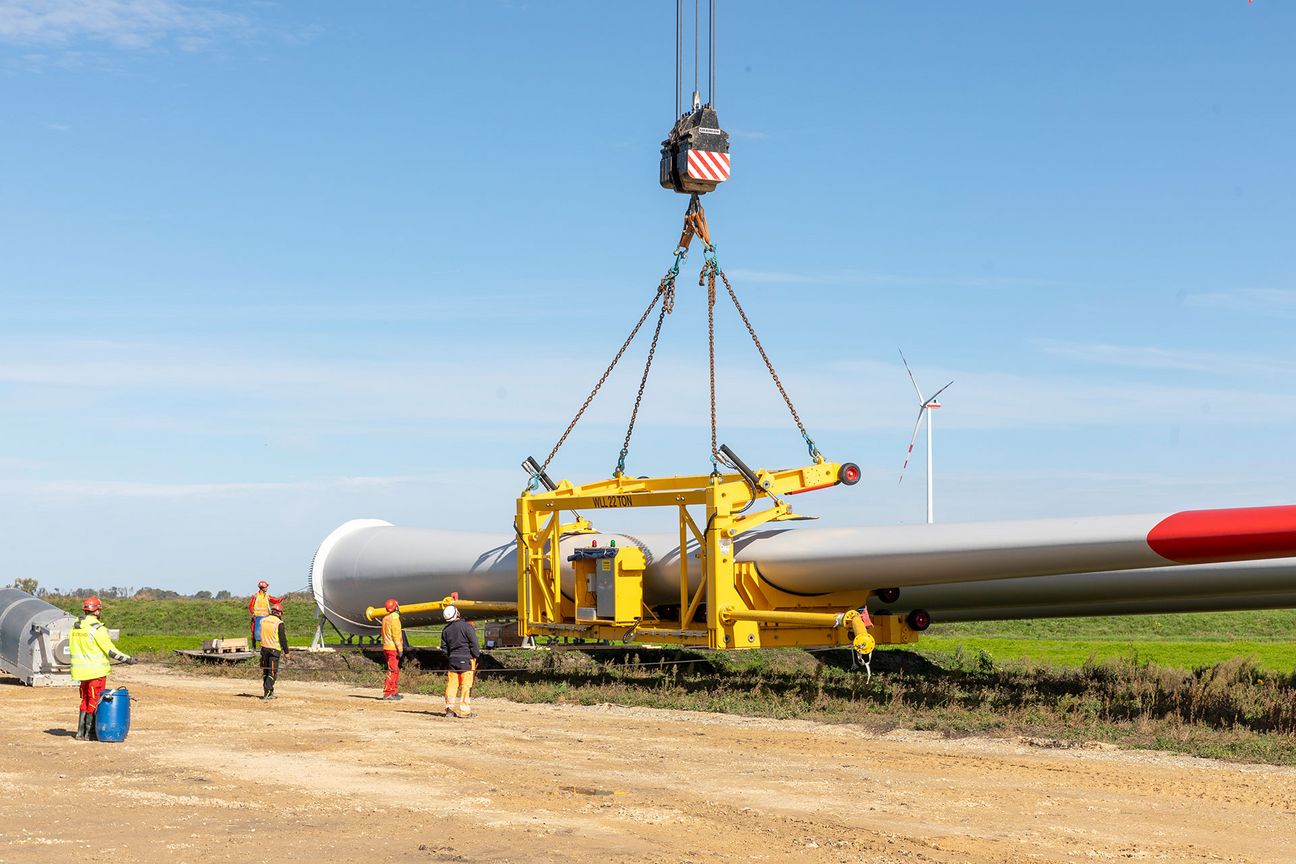
The time had come at the end of September. The transport and project departments celebrated the successful completion of the project with the lifting in of the last rotor blade. "We were faced with a huge task a year ago, which we rarely encounter on this scale. It was thanks to our close coordination and our experienced team that we were able to ensure a smooth process here too," summarises Pühringer. "I'm proud and also relieved that we succeeded once again in demonstrating our expertise despite the many obstacles," says Wagner, summarising the project.
The new turbines in Marchfeld were connected to the electricity grid in December. Commercial commissioning then took place in March. Its capacity of 45 megawatts is equivalent to the average demand of 39,000 households.
